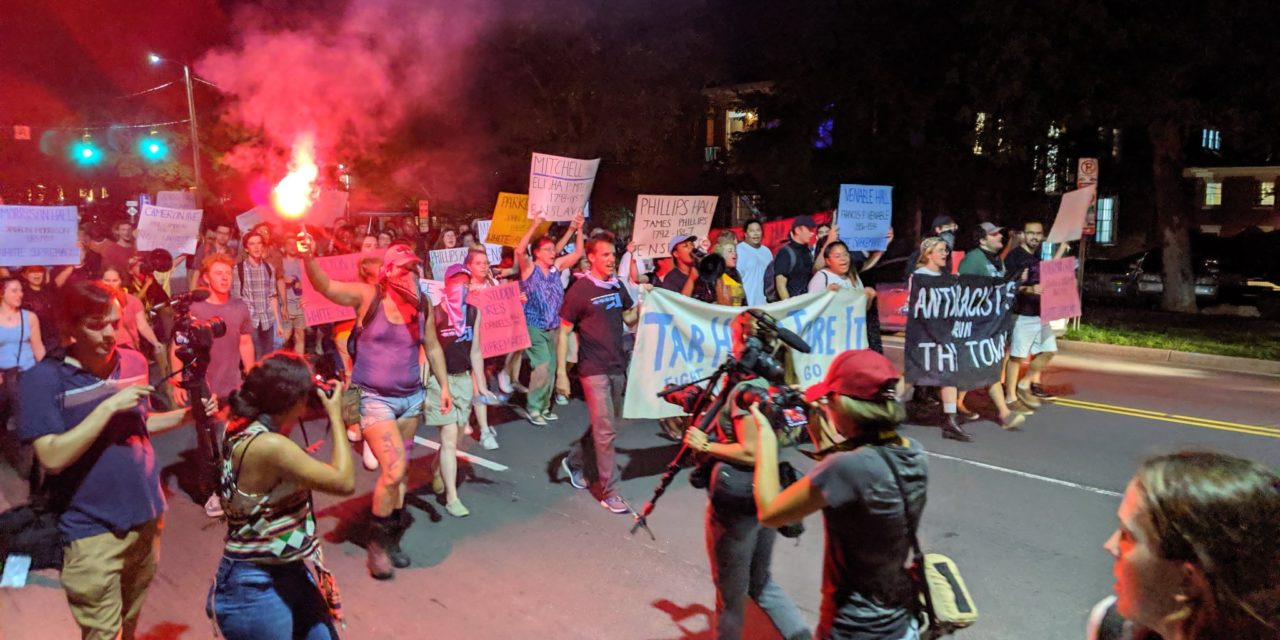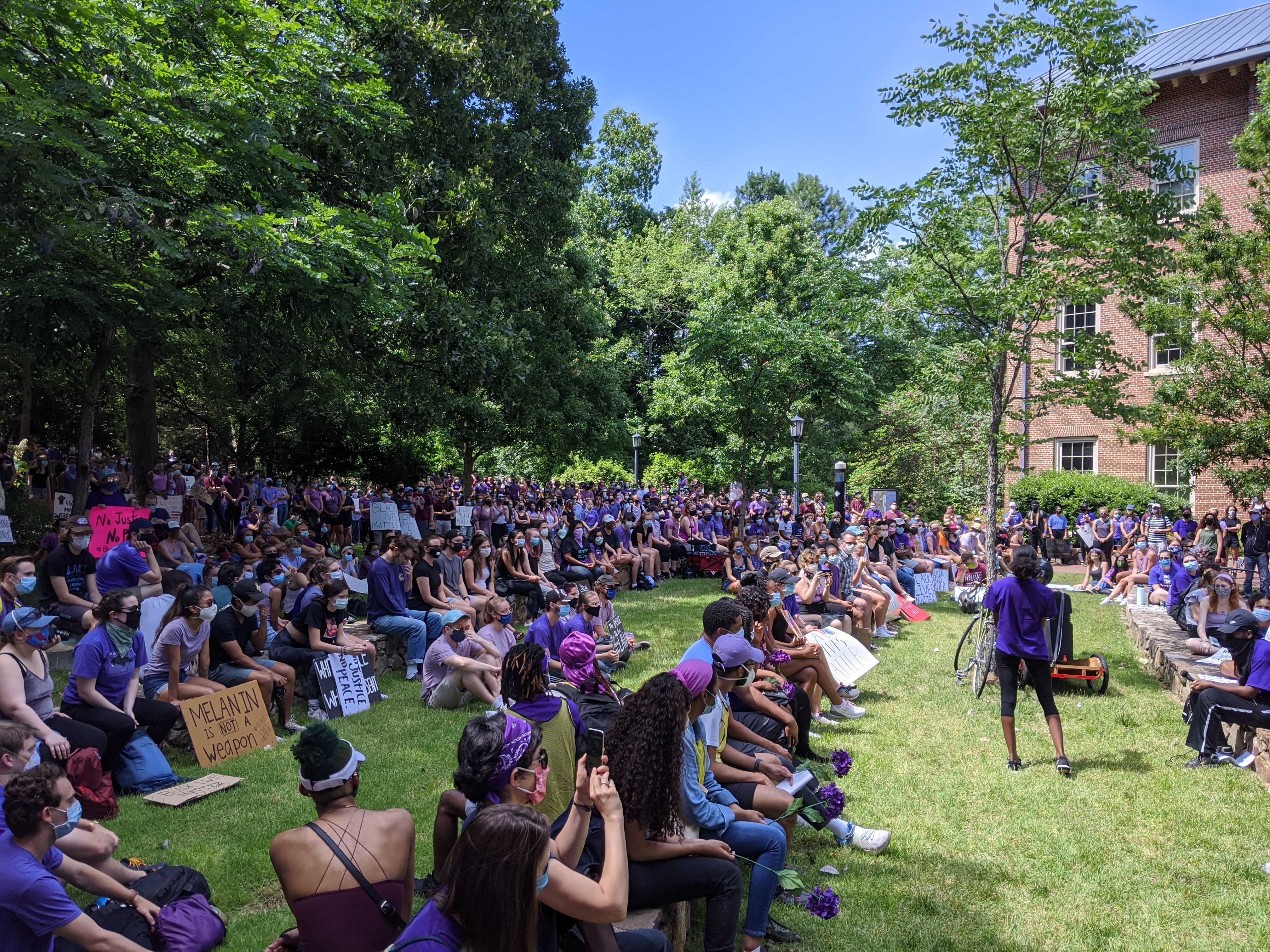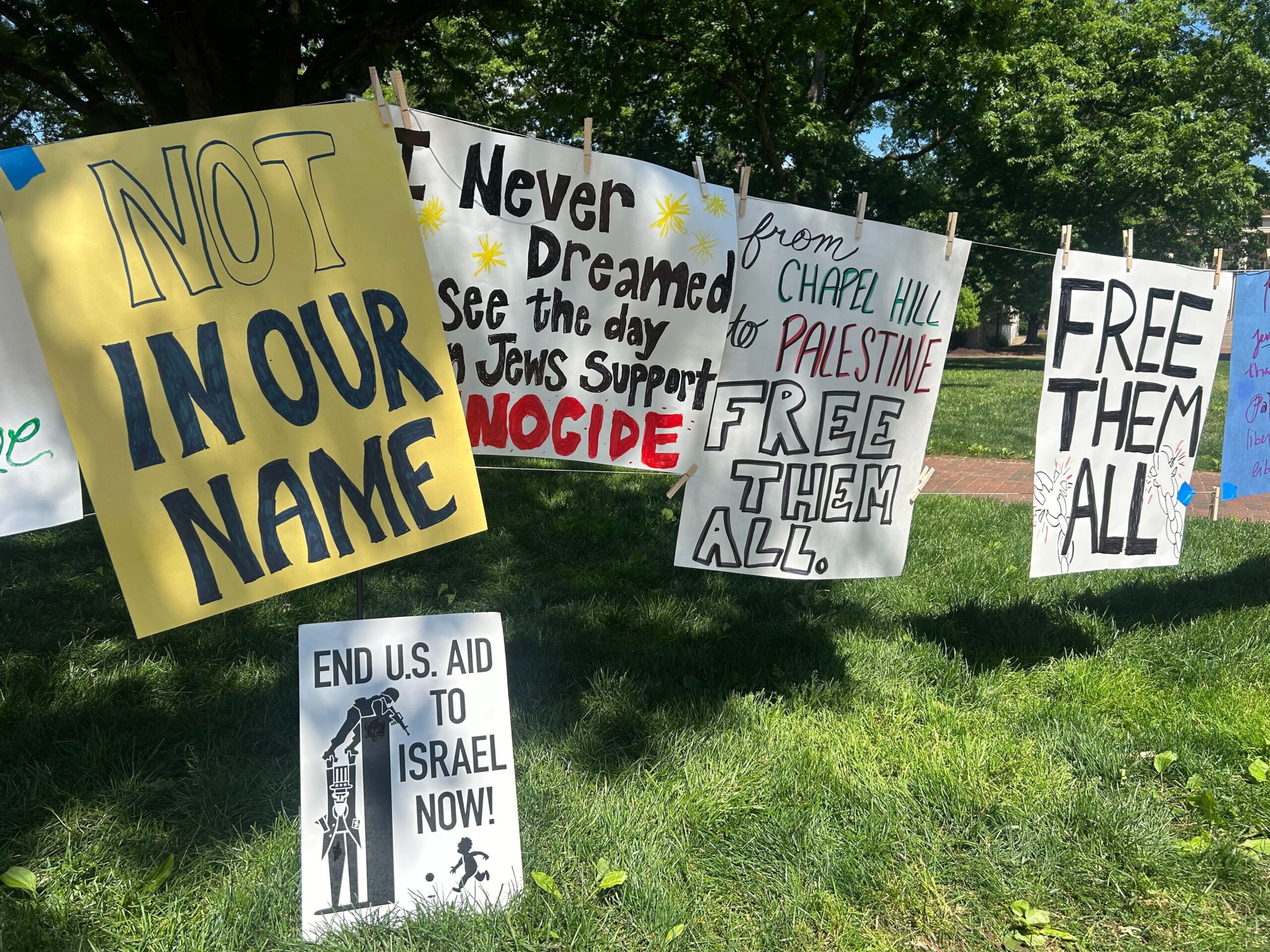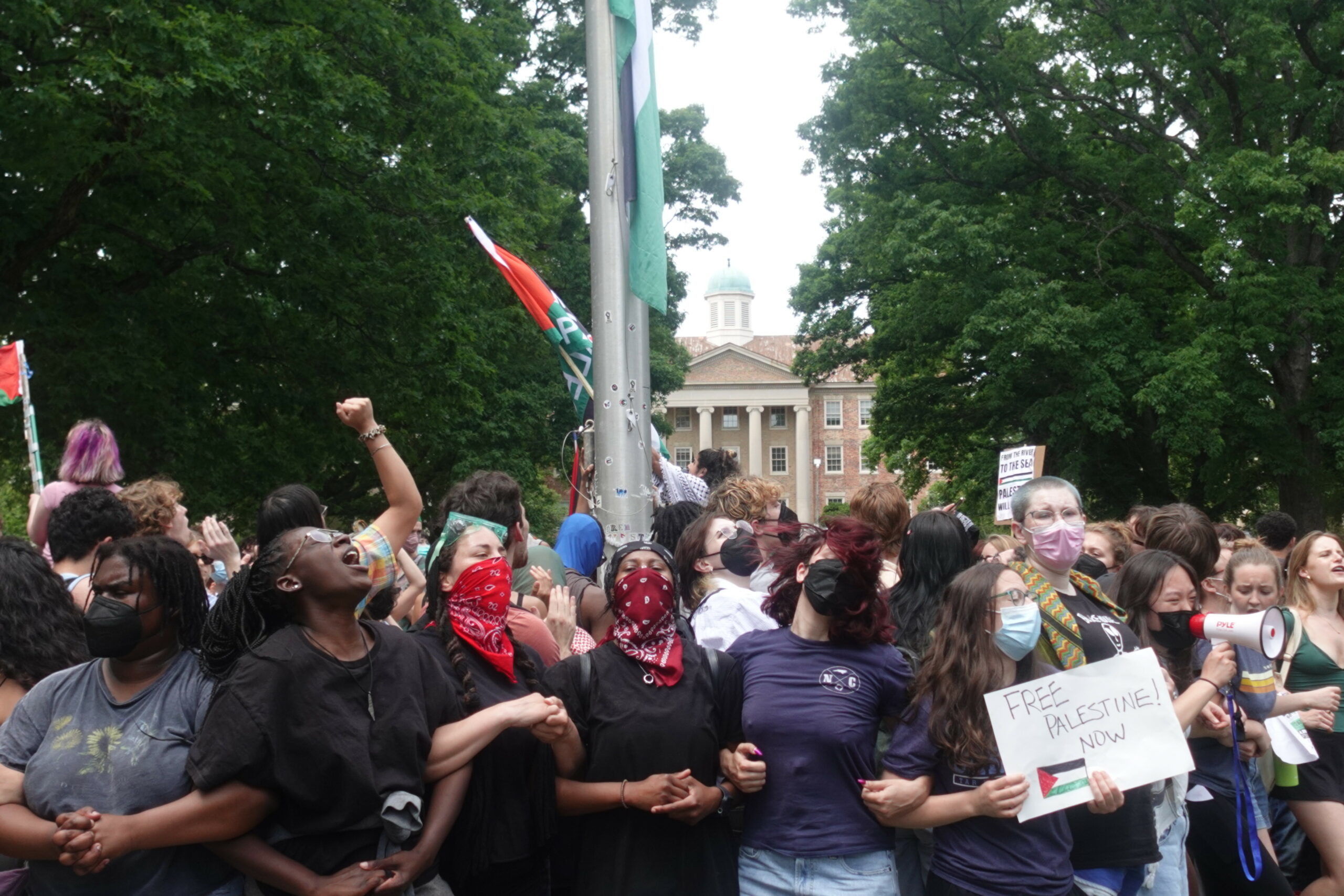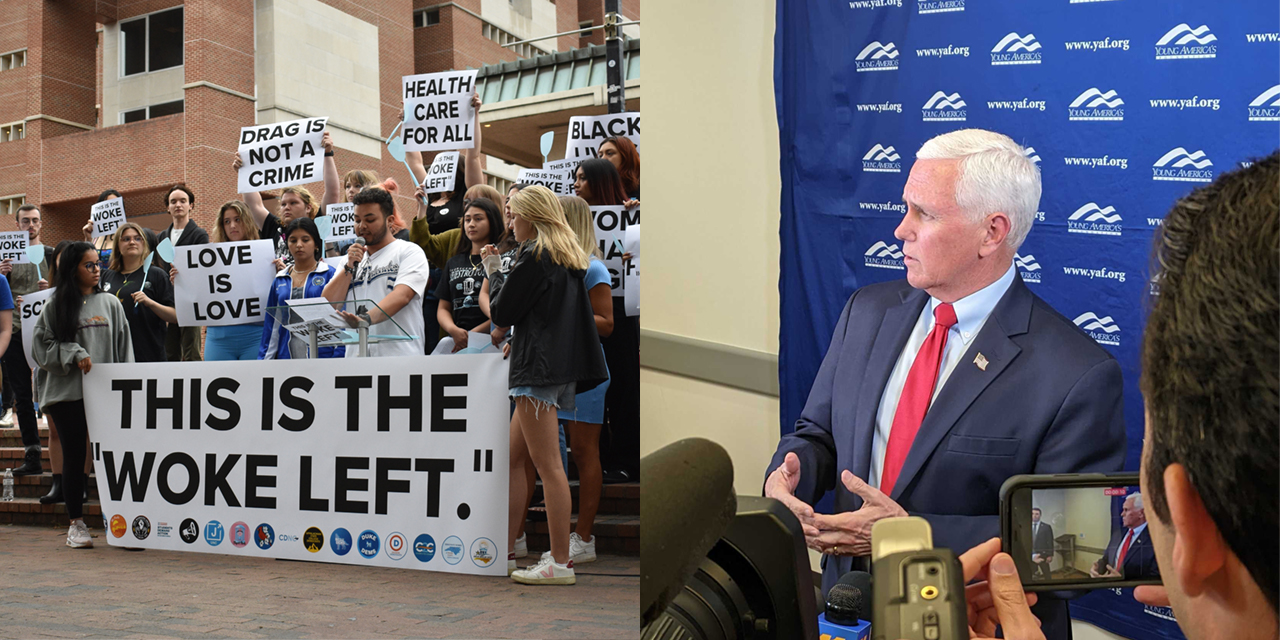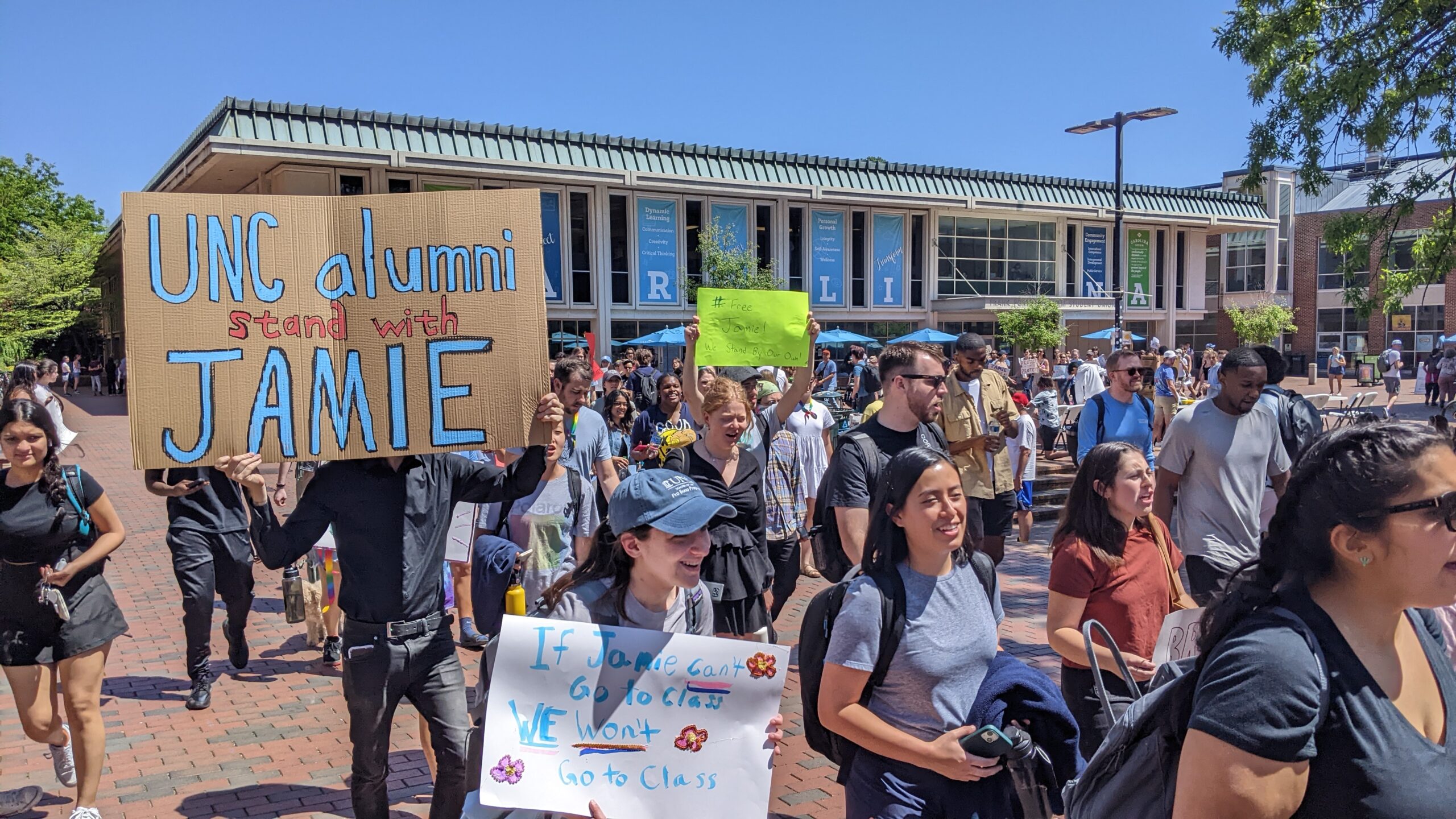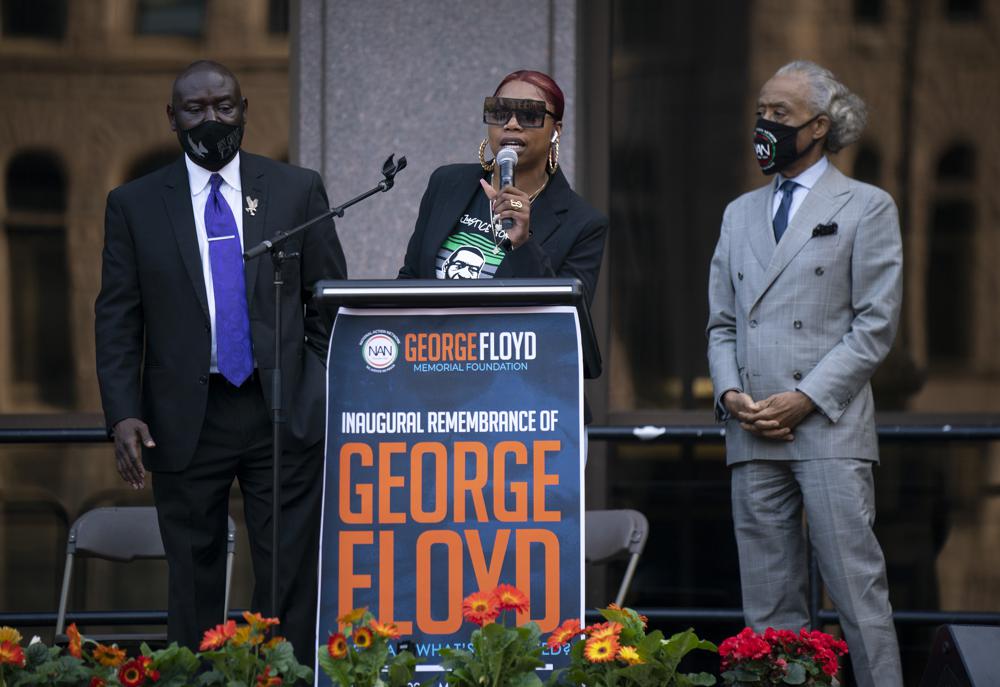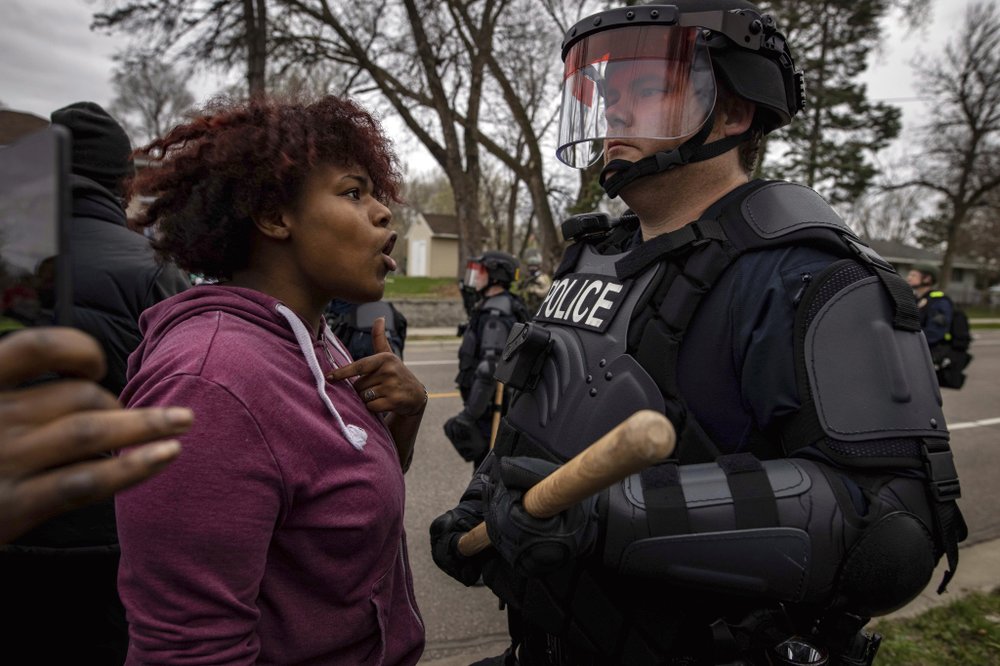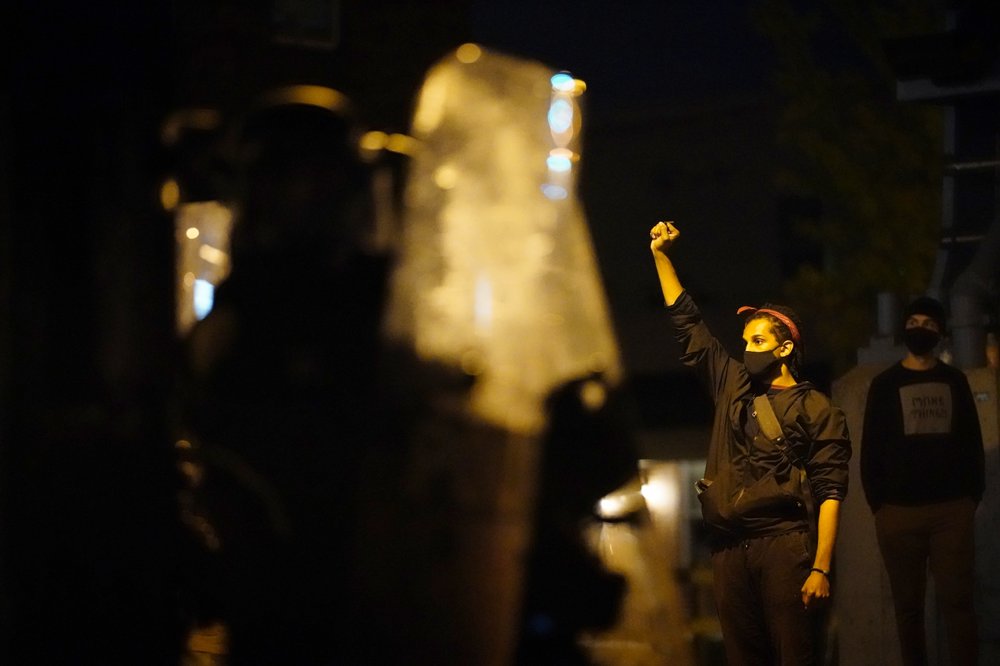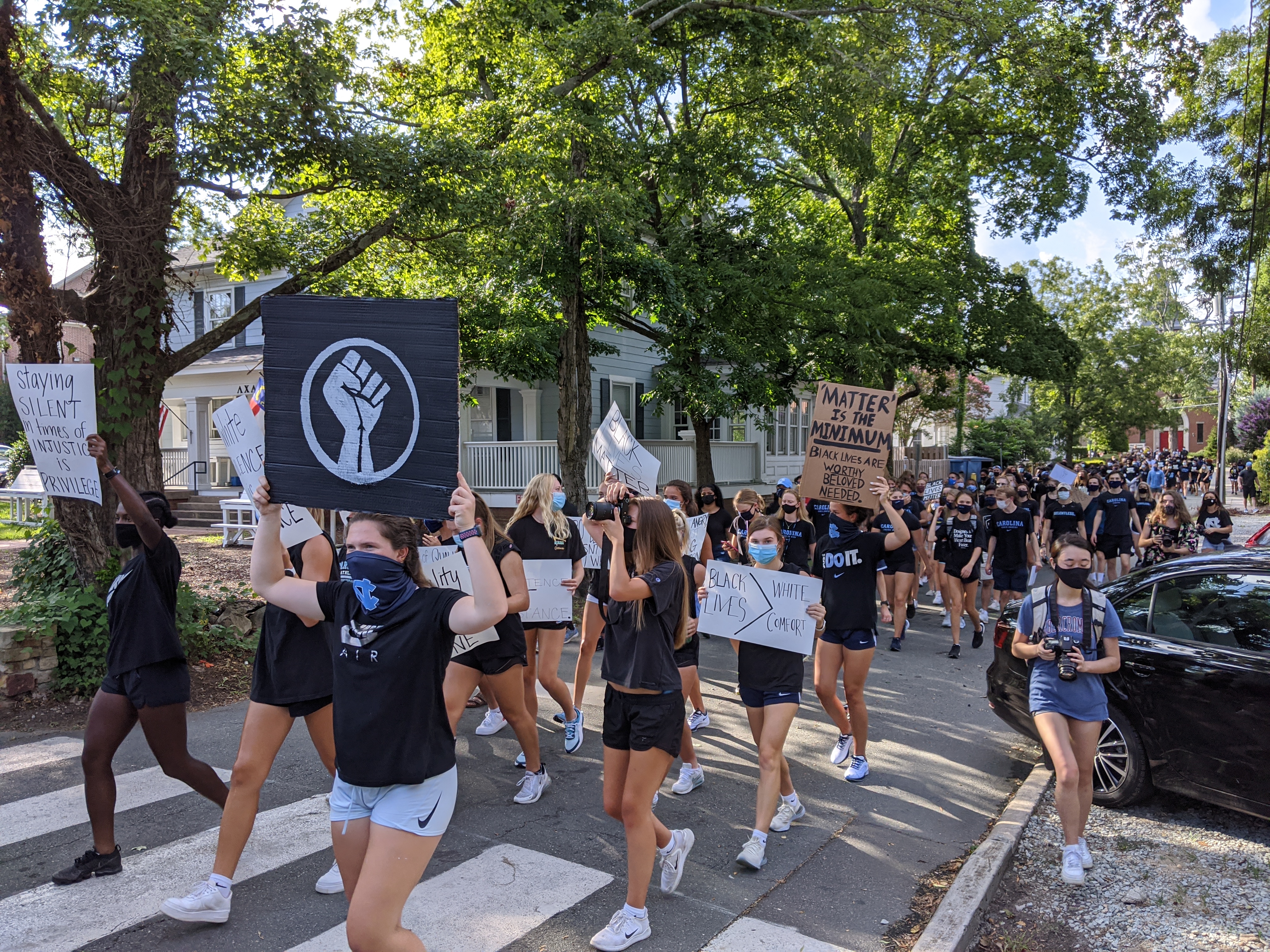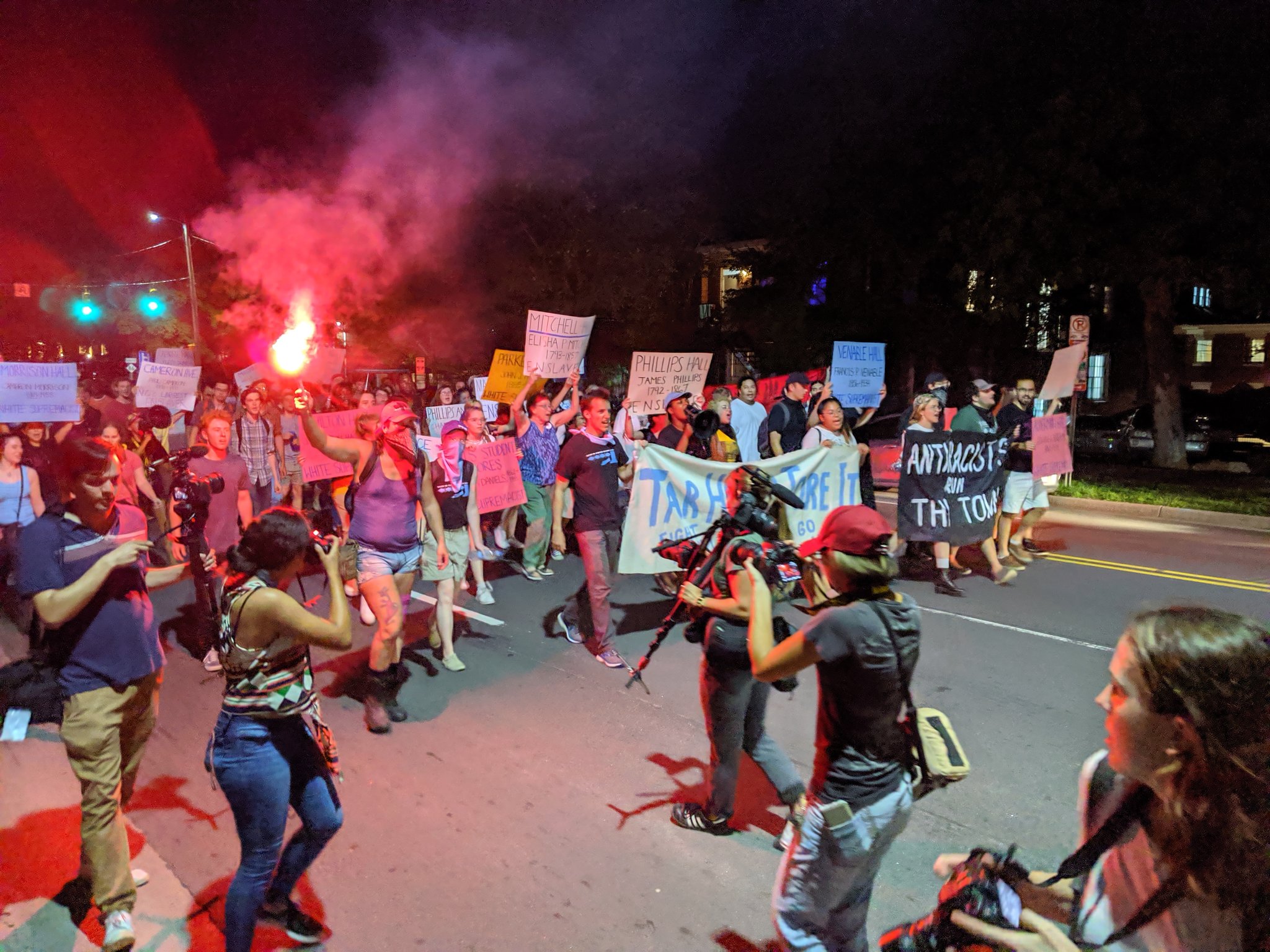More than 100 people spent Tuesday night gathered to celebrate the removal of the Confederate statue Silent Sam and champion the rights of minorities, LGBT community members and activists. The rally, however, was not just to remember the actions of protesters a year ago when they pulled down Silent Sam. It was also to encourage attendees to continue pushing for change and representation at UNC.
Rallygoers traveled across McCorkle Place, recognizing the Confederate monument’s former location and the Unsung Founders monument while organizers described the oppression they’ve experienced at UNC. The group then moved to the Old Well, where they held up signs displaying names of figures the university has buildings dedicated to.
Danielle Dulken, a PhD student at UNC, urged both rallygoers and those in line for the traditional sip of water on the first day of classes to learn more about the people behind the building names.
“We invite you to look around and pay attention to the places you walk, sleep, eat, write and think,” said Dulken. “When you say the name of your dorm room or your campus office building, who has this university taught you is worth of honor?”
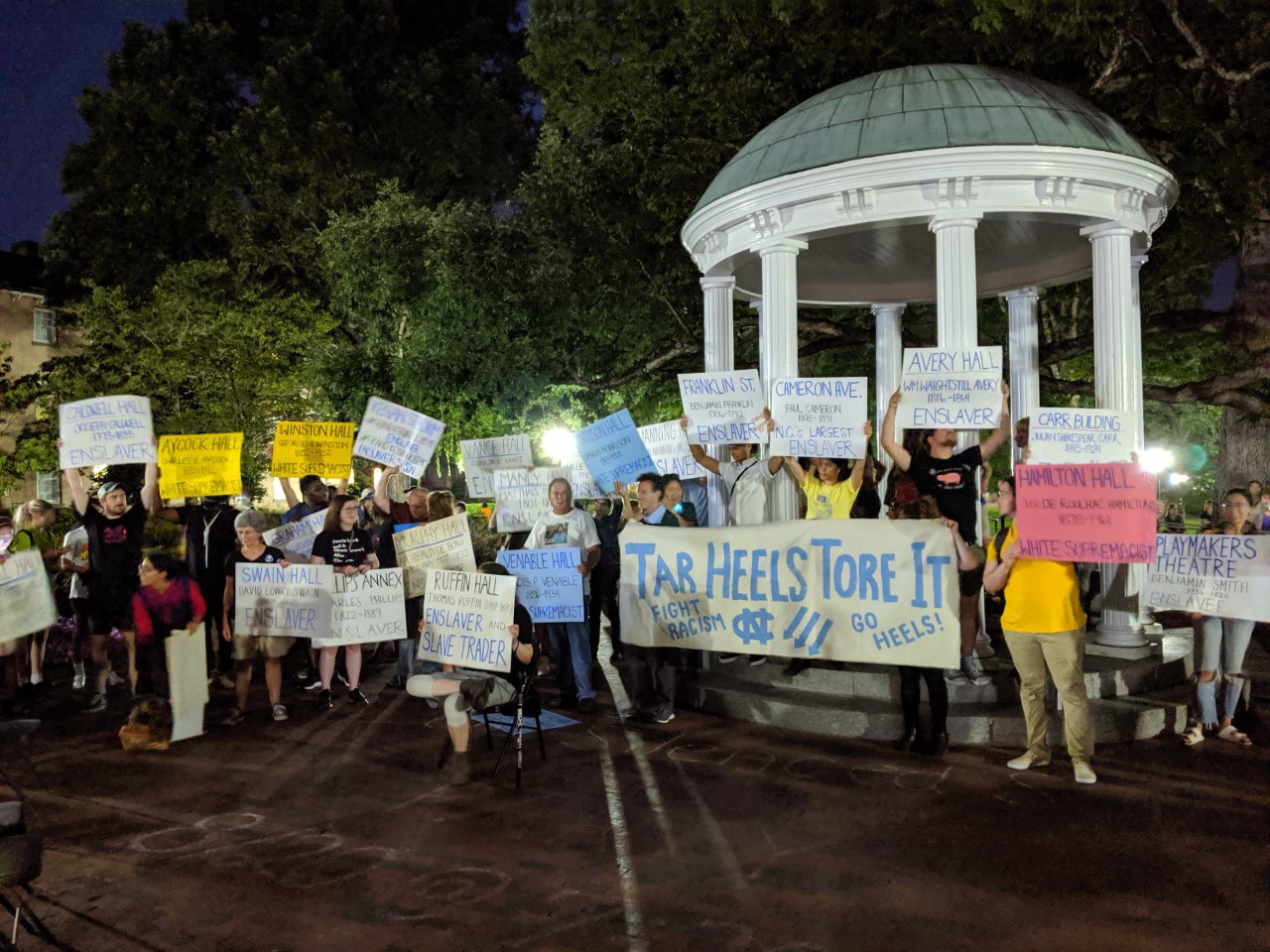
Rallygoers display signs of 28 UNC buildings named after or built by white supremacists or former enslavers. The moment was part of an event celebrating the anniversary of Silent Sam’s removal from campus.
Dulken read out 28 buildings at UNC the group said were dedicated to former enslavers or white supremacists. She said many of them, despite being university presidents, trustees, scientists and more, were outspoken in their beliefs that people of color were lesser than the white race. Four buildings on campus are named after black leaders: the Sonya Hayes-Stone Center, Horton residence hall, Jackson Hall, and the Cheek/Clark Building. She pointed to the renaming of Saunders Hall as an example of the university’s intentions. After falling under criticism for the building’s namesake being a former KKK organizer in North Carolina, the university changed it to Carolina Hall in 2015. Activists had been pushing for the name Hurston Hall to honor black author Zora Neale Hurston, but the university Board of Trustees said they could not find enough of a connection to UNC to name it after her.
Earlier in the rally, UNC Black Congress member De’lvyion Drew discussed her views of safety on a campus where she notices that difference in the names of buildings. She challenged the university for choosing those names and the campus police for their methods of protecting students.
“The very idea,” said Drew, “that is it objective to tolerate historical statues, historical building names and a police agency that doesn’t alert us when white supremacists – the number one identity group behind global mass shootings – arrive on campus unannounced and armed, is false.”
Drew told the crowd despite the Confederate statue being gone, she believes those who allowed it to stay on campus remain and impact minorities’ lives at UNC.
“Systems that brought Silent Sam to life and maintain his shadow still exist on his campus and mean war,” she said. “It will take all of us to get free [of them.]”
It would take a larger effort than the one that led to the removal of Silent Sam to make further changes to building names and Confederate monuments. Following the renaming of Saunders Hall, the UNC Board of Trustees passed a 16-year moratorium on further changing any buildings names on campus. In addition, the state general assembly passed a law in 2015 that restricts how and when any ‘objects of remembrance’ could be removed. This law was cited as one of the main challenges UNC administrators faced when considering the removal or relocation of Silent Sam before protesters pulled it down.
UNC interim chancellor Kevin Guskiewicz announced on Monday the university will aim to make diversity, equity and inclusion a priority in their strategic plan. He said he aims to bring back the History Task Force established in the wake of Saunders Hall’s renaming as a commission on history, race and reckoning.
Before the rally continued its march down Cameron Avenue and eventually towards Franklin Street, Dulken and other speakers called on attendees to remain aware of their environment and to challenge those who further systemic oppression.
“The memorials to white supremacy at UNC are both a symptom and a cause of racism in this town, this state, this nation,” Dulken said to the crowd. “But we tore down Sam; we renamed Hurston Hall, and we will do it again and again and again and again and again and again, until they all fall.”

